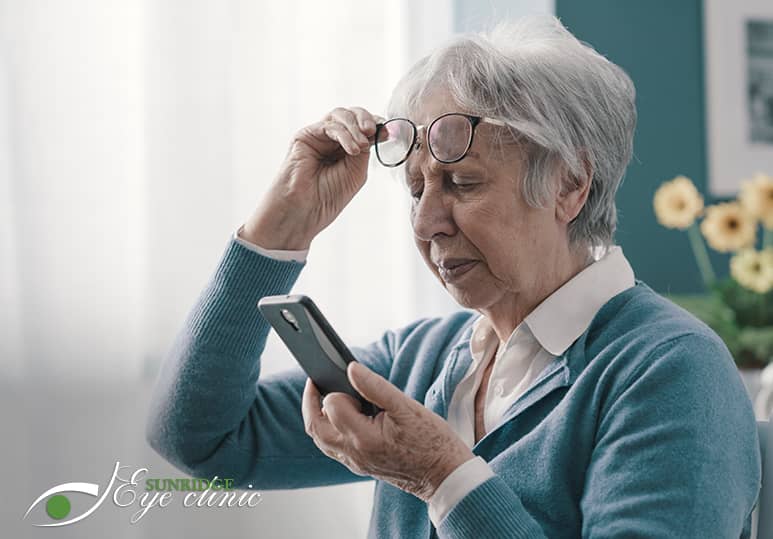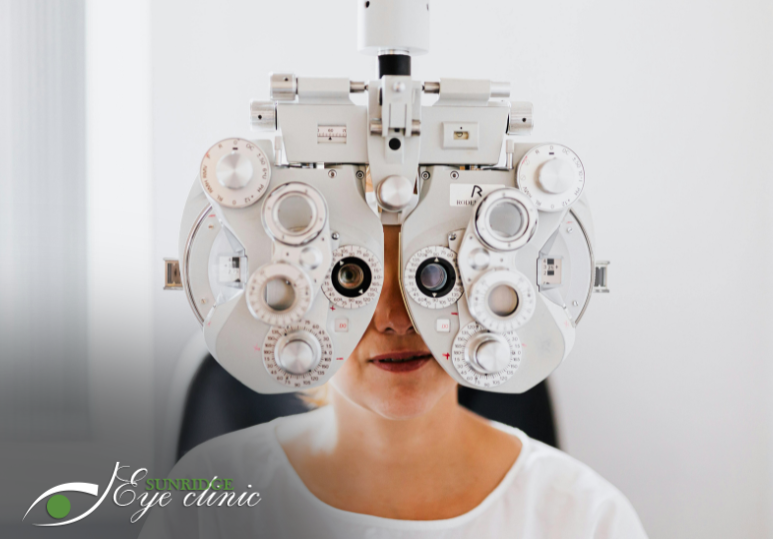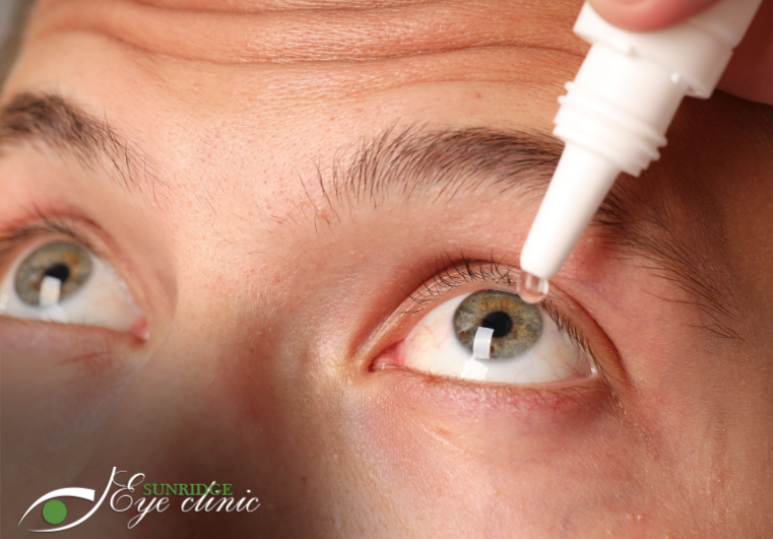Types And Stages Of AMD
There are two types of age-related macular degeneration:
Dry AMD: Dry AMD accounts for the majority of cases and is caused by yellow deposits called drusen that build upon the macula. These deposits come from photoreceptor cells in the retina that start to break down and die. This results in vision distortion and is most noticeable when required to perform small, detailed tasks.
Wet AMD: Wet AMD is quite rare and the vision loss associated with it can be devastating. Wet AMD occurs when abnormal blood vessels grow in the choroid, the pigmented middle layer of the eye. Eventually, wet AMD causes the blood vessels to leak blood and protein. This can cause more severe visual distortion than dry AMD. If the broken blood vessels form scar tissue, the person can experience a permanent loss of central vision.
Symptoms Of AMD
People over the age of 55 are more at risk for developing age-related macular degeneration. The most common symptoms of wet AMD include:
- Straight lines look wavy
- Trouble seeing detail
- Images similar to hallucinations
- Blank spots
- Blurry vision
Because AMD does not cause pain and the typical warning signs can be very mild, annual comprehensive eye exams are crucial for early diagnosis and vision preservation.
AMD Prevention
There are a number of preventative measures you can take to reduce your risk of developing AMD.
- Do not smoke
- Exercise
- Eat a nutritious diet full of leafy green vegetables such as spinach
- Keep your weight, cholesterol, and blood pressure in check
- Wear sunglasses
- Have regular comprehensive eye exams
- Treatments For AMD
The progression of age-related macular degeneration varies from person to person and can also develop slowly over a number of years. There is currently no cure for AMD. Those who have dry AMD can learn to live with the vision loss by learning to compensate with their remaining vision. There have been studies that suggest that dry AMD can be improved through vitamin and mineral supplementation. Vitamins and minerals such as Vitamin C, Vitamin E, Lutein, Zinc, and Copper can help slow the progression of dry AMD symptoms.
Wet AMD has more treatment options than dry AMD such as laser surgery that works to slow the leaking blood vessels to decrease fluid buildup in the retina as well as prescribed medication by your optometrist. The most common laser surgeries recommended for wet AMD include photodynamic laser therapy and high-energy laser light therapy. Your optometrist will determine the best treatment plan for your AMD condition to ensure optimal results to help you see clearly and comfortably.
Find Out If You Are At Risk Of Having AMD
AMD is a common condition and is a leading cause of vision loss in older adults. The disease can progress slowly in some and more quickly in others. If you have early AMD, you may not notice the small indicators of vision loss right away. That is why it is important to get regular senior eye exams. Those the age of 65+ are recommended to receive eye exams annually. If you are at risk for AMD because of your age, family history, or other factors it is also important to get regular seniors eye exams.
To find out if you are at risk of age-related macular degeneration or if you need to book an eye exam to check the quality of your vision, contact Sunridge Eye Clinic. Our experienced optometrists can assess your vision and develop a personal treatment plan to help you see clearly.
Book a comprehensive or senior eye exam today by calling 1-403-280-7518 or book online.
FAQ
Q: At what age do adults start developing AMD?
A: Individuals 55+ are the most at risk of developing age-related macular degeneration.
Q: How long is a comprehensive eye exam?
A: A comprehensive eye exam will last anywhere from 30 minutes to an hour depending on the tests performed by your optometrist.
Q: Is there a cure for age-related macular degeneration?
A: Unfortunately there is no cure for AMD. There are some treatments that can halt the progression of the disease such as laser coagulation.






